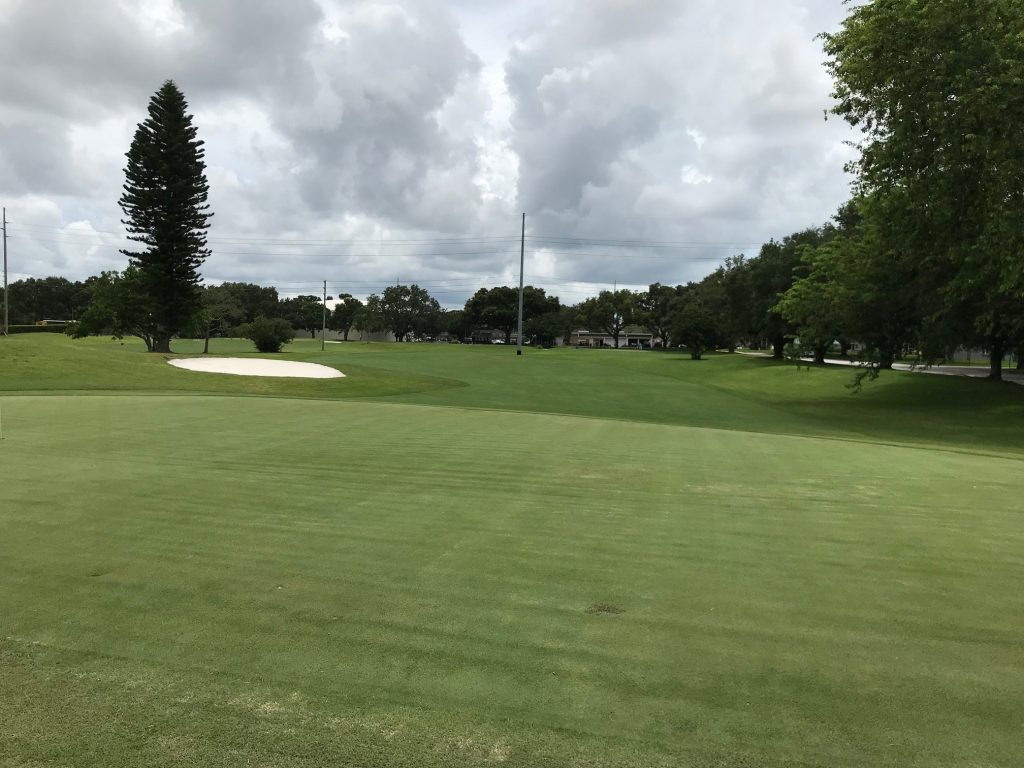
Uncategorized
Agronomy
Putting together a turfgrass chemical plan
October 6, 2021 Sponsored by Marmic Solutions
 Photo shows the "after" effect of Fairway Fourway.
Photo shows the "after" effect of Fairway Fourway. Forming a chemical plan can be an overwhelming, expensive and a time-consuming process for any golf course, lawn care service or sports turf facility. If you are in the role of golf course superintendent, grounds manager or agronomist, it is a given that you know the science behind making beautiful and functional turfgrass. The selection process, coupled with finding ways to spend your budget wisely, can often be a concern for a turf manager.
It is extremely difficult for turf managers to filter through the information associated with the barrage of new products or packaged blends made available to the consumer each year, while deciphering how transportation and other contributing factors, like deciding on an early order program, can impact your inventory and supply costs. Not to mention, each property itself has unique characteristics that a manager must also take into consideration. This is not an enviable task and should not be taken lightly because of its impact to the budget and the impression it can leave of the manager’s problem-solving capabilities.
Register for the FREE Webinar: Nov 9 @ 1pm EST | Selecting the right wetting agent | Register Today
When putting a chemical plan together, some of the factors to consider may include: soil types, turfgrass varieties grown, local climates and micro-climates, the amount of play and use, acceptable turf quality, player expectations and what available budgets exist. Historical problems around the property, such as localized dry spots, thinning turf, compaction, weed and/or insect invasion and fungal diseases should also be identified and included in the plan. A plan can then be formulated using the available products that typically include: fertilizers, herbicides, fungicides, insecticides, wetting agents, bio-stimulates and micronutrients. Hopefully, this can be achieved without loading up on your inventory with the “just-in-case” products that you might not actually need or use, as the season progresses. These products may end up being an unnecessary budget hit and may even have a questionable shelf life.
To understand the process better, we reached out to some front line turf managers on how they build a successful chemical plan, while managing costs and distribution channels.
Steven Neuliep, GCSAA class A superintendent, told us that when he looked at ways to create product synergies – in order to reduce his budget costs – he was able to accomplish that with a wetting agent product called Fairway Fourway.
“Fairway Fourway is an essential part of our agronomic programs,” he said. “With this product, we get performance at an affordable price point.”
This confirmed that marketing efforts to create a multi-purpose product that could help managers like Steve meet his budget needs was possible. Neuliep’s course is in the Blue Ridge Mountains, where he manages bent/poa greens, tees and fairways on 27 holes. Any product on the market that creates multiple benefits is one way to address these budgetary concerns.
While Canadian courses have fewer product options than their U.S. counterparts, there are numerous choices which can vary by chemical function, price point and local availability. Distributors often provide local supply with their working relationships with producers being the key. Accordingly, they must focus on making sure that the product is readily available for the customer. This may require commitments that lead to advanced agreements and drive the necessity for a customer to commit to an early order program up front in order to satisfy supplier agreements and provide the accompanying discounts. Evaluating products, in advance, in order to prove out “performance” and how that correlates with “applied costs,” is the best way to evaluate the appropriate products and create an efficient chemical plan.
Many distributors and producers are happy to facilitate new product trials, especially on products that provide multiple benefits and can provide “a one-stop shopping and one-product buying approach” to the customer and ease their budget concerns accordingly. This cannot be achieved without verifying the product capabilities and its overall quality first.
Canadian distributor, Marmic Solutions, based in Woodstock, Ont., has made it a point of taking this approach with customers on their product line selections, and will run various trials to qualify the products and justify the programs they support. An example of this is with the AgStone™ LLC newly registered wetting agent Fairway Fourway, which was CFIA-registered and made available in Canada this past spring. This season, their customers acknowledged that there is substantial value in a multi-dimensional wetting agent that can “reduce water demand, increase nitrogen efficiency and reduce nutrient leaching, all at once, while keeping chemical budgets at a manageable level.”
As AgStone LLC, broadens their prospectus into Canada, they have found the same problems concerning turf management.
“Regardless of the types of grass found on any of the properties we worked with, the issues are usually the same as what we see with any U.S. counterparts.”
In the case of Ben Bell, the superintendent at Elmira Golf Course, located in Elmira, Ont., he was always looking for affordable ways to deal with his 24 acres of bent/poa annua fairways and greens, especially when the seasonal heat stress issues occur each year.
With a semi-automatic irrigation system on his tees/greens and manual quick couplers throughout the fairways, utilizing a product that is non-ionic was a tremendous advantage for Ben.
“I didn’t have to worry about burning the turf, prior to the next irrigation cycle and, even at low rates, I’ve noticed good moisture retention in my soils and early morning dew suppression on the surface,” he said.
This is the result of the wetting agent’s “uniform wetness” capabilities.
As is the case with any products that a turf manager reviews for his or her own use, once solutions like this are identified, an exercise in optimizing effectiveness should be completed so that the user can accurately compare and identify a chemical program’s “performance” with the “applied costs.” Other products may have a lower selling price, on a per-gallon basis, but the rates actually used may end up being higher or sometimes the product’s longevity may be shorter. This is not as cost-effective for a turf manager, so they need to do this verification exercise up front. Chemical plans do not have to be a burden, especially when you take a proactive approach. It can be extremely satisfying to “think outside of the box” and identify both newer and older products on the market that can provide these increased benefits, when attempting to reduce your overall budget and its cost impact to your turf programs.
For more information, click here.
Print this page
